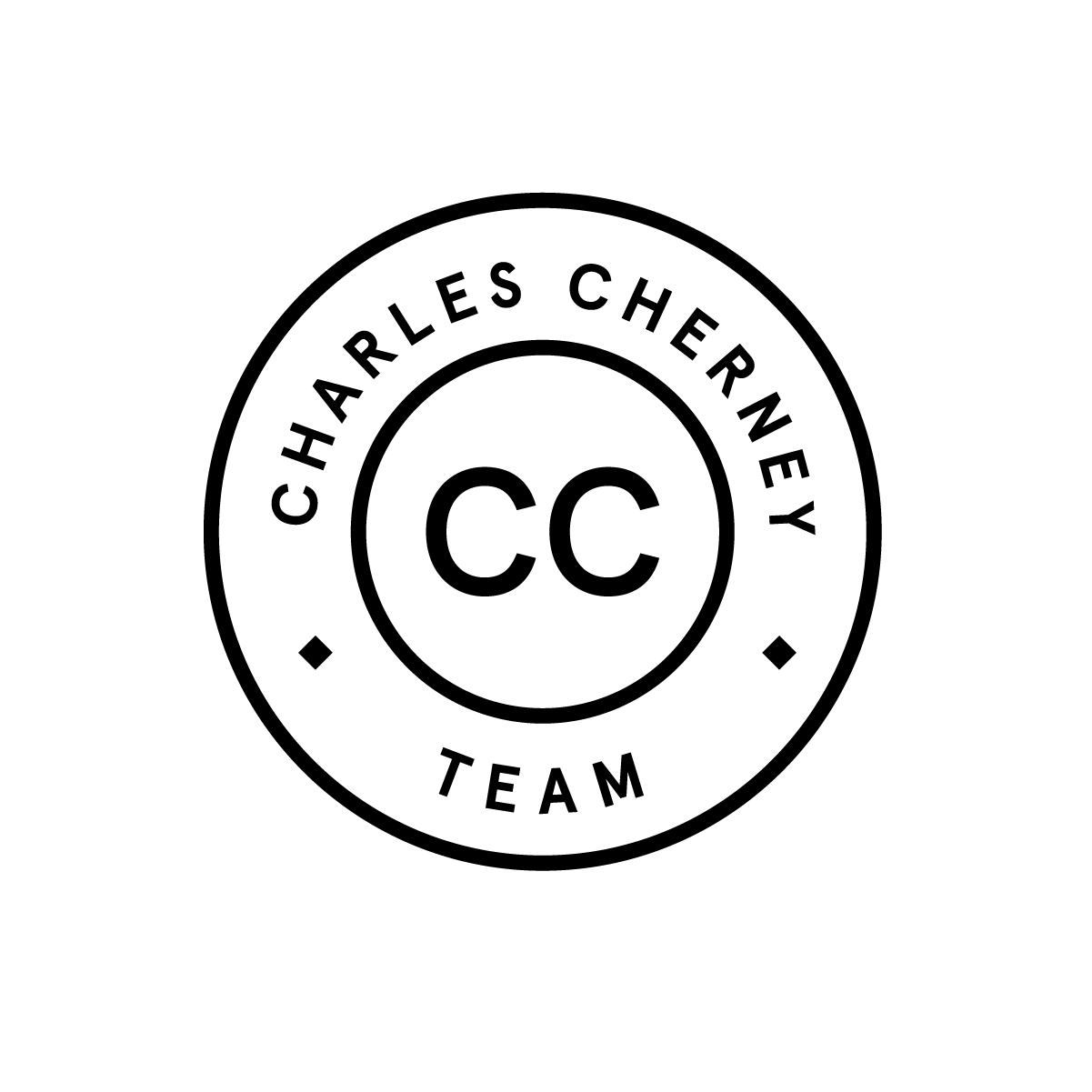Platform
Common Mortgage Questions
And The Answers!
Q: What is the down payment?
A: The short answer is that your down payment is the amount you are not mortgaging.
Let's say you are purchasing a property for $500,000. Your offer indicates your loan amount is 80% of the purchase price or $400,000. This means that your down payment - the amount you are not mortgaging - is $100,000 or 20%.
Let's walk through this example of a $500,000 purchase with a loan amount of $400,000.
You write a check for $1,000 at the time of making the offer. This check is known as the binder check.
Your offer is accepted (congratulations!) and a week later you write a second check for $24,000 when the offer is replaced by the purchase and sale agreement (the p & s).
First check ($1,000) + second check ($24,000) is $25,000.
$25,000 is 5% of $500,000.
5% is the amount you have put down at purchase and sale.
Remember, though, that the down payment is the amount you are not mortgaging.
In this example the down payment is $100,000 or 20% of the purchase price.
Therefore, at the time of the closing, you will need to have another $75,000 to add to the $25,000 you put down at purchase and sale. $75,000 + $25,000 is $100,000. $100,000 is the downpayment in this example. It is 20% of purchase price of $500,000.
The confusion with regard to the downpayment in our marketplace stems from the second check due upon signing of the purchase and sale. Oftentimes, buyers think of the purchase and sale check as the downpayment. However, to be clear, the down payment is the amount you are not mortgaging.
And what if you are an all cash buyer who is not getting a mortgage? Well, that is amazing:)! The pure all cash buyer who is not getting a loan may think of their down payment as the amount they are putting down at the signing of the purchase and sale, as essentially there is no amount that is not being mortgaged.
Q: What is TRID?
A: The short answer is that TRID stands for TILA-RESPA Integrated Disclosure Rule. TILA is the Truth in Lending Act. RESPA is the Real Estate Settlement Procedures Act. This rule is also known as the Know Before You Owe mortgage disclosure rule
Implemented in 2015, TRID is designed to make sure all mortgage lenders’ disclosures are clear, correct, and easy for buyers to understand. TRID is the new mortgage standard, as it is mandated by the Consumer Financial Protection Bureau (CFPB.) The Know Before You Owe mortgage disclosure rule replaces four disclosure forms with two new ones, the Loan Estimate and the Closing Disclosure. The rule also requires that you get three business days to review your Closing Disclosure and ask questions before you close on a mortgage.
The HUD Settlement Statement, commonly used for many years at closings, has been replaced by the Closing Disclosure Statement (CD). Because of what needs to be put into the CD, banks now have a three-day time period prior to the closing by which to deliver the final closing statement to borrowers. If something changes in that three-day period, i.e., there is a new adjustment which was not previously disclosed to the bank, the bank needs to prepare a new Closing Disclosure Statement. This starts the three-day process all over again. To protect buyers’ deposits from being taken if the buyer is not ready to close due to this type of delay, attorneys in our marketplace are now typically including a TRID addendum in the purchase and sale agreement addressing this matter. This means that the closing can be automatically extended if the buyer’s lender needs to create a new disclosure statement.
Practically speaking, what does this mean for me as a buyer? Good question! If you are planning to get a loan to purchase a property, be sure that your written offer includes some version of the following statement:
The parties will include a mutually agreeable TRID Addendum in the Purchase and Sale Agreement.
If a buyer does not include this language in the offer itself, will the buyer’s attorney still seek to include a TRID addendum in the purchase and sale? In all likelihood. That being said, don't put yourself at a disadvantage. Include the language noted above in your offer. (It's worth noting here that some buyer agents attach a TRID form to their offer instead of employing the simple language noted above. Either solution is fine. Just be sure your buyer's agent addresses this matter one way or the other in your written offer.)
Q: What is title insurance?
A: To quote attorney Richard Vetstein, "Title insurance is policy of insurance (technically an indemnification policy) protecting homeowners and lenders from actual financial loss in the event that certain covered problems develop regarding the rights to ownership of property. While Massachusetts closing attorneys search and certify each title to real estate before a closing, there are often hidden title defects that even the most careful title search will not reveal. In addition to protection from financial loss, title insurance pays the cost of defending against any covered claim."
Attorney Vetstein has written several excellent blog posts on title insurance on his Massachusetts Real Estate Law Blog. Be sure to read Vetstein's post Title Insurance Demystified.
I also encourage you to read Vetstein's post An Ounce of Prevention Is Worth a Pound of Cure: Enhanced Owner’s Title Insurance Offers Valuable Benefits.
As Vetstein notes, title insurance is a one-time premium paid at closing, and the cost of title insurance is calculated based on the purchase price of your home. There are two types of title insurance: lender’s policies and owner’s policies. Lender’s policies are required by most every public mortgage lender in the U.S., and lender's policies are typically paid as part of closing costs. Owner’s policies are optional and paid for by home buyers. The cost for standard coverage for an owner's policy is $3.65 per $1,000 in home value. Enhanced coverage policies run $4.00 per $1,000 and provide better coverages. When you purchase both lender’s coverage (always required by mortgage lenders) and owner’s coverage at the same time, there is a substantial discount.To get a better sense of the cost title insurance, you can review Stewart's rate book for the Commonwealth of Massachusetts.
Q: What is the appraised value?
A: The appraised value is the specific dollar value placed on a property by a licensed appraiser. Cambridge and Somerville assess each property each year for tax purposes - that is the assessed value. As a Realtor, I frequently complete a valuation analysis for a property to arrive at a market range of value. It is a Licensed Appraiser who completes an appraisal and comes up with an appraised value - a specific dollar value for a specific property on a specific date. Typically, an appraisal happens in the following circumstances:
1) A property owner wishes to refinance or to establish a home equity line of credit or to establish the value of the residence for some other purpose such as estate planning or a divorce proceeding
2) A buyer with an an accepted offer is getting a loan to purchase the property.
When I meet with a prospective seller, I often learn that the seller has recently had an appraisal of their property completed by an appraiser. For whatever reason, the appraised value is often quite high. My role as a Realtor is to complete a valuation analysis and arrive at a market range of value for a property.
The appraised value arrived at by the appraiser can mean a lot in a real estate transaction. Consider the following example:
123 Main Street is listed for sale for $425,0000.
John and Mary make an offer for $500,000.
There are six offers on the property.
John and Mary's offer for $75,000 over asking is the winner!
John and Mary's offer indicates they are seeking a loan for 80% of the purchase price (80% of $500,000 is $400,000)
John and Mary's lender requests an appraisal. The appraiser visits the property and completes his appraisal report.
The appraisal report submitted to the lender by the appraiser indicates the appraised value is $450,000.
Okay, so what happens in this scenario? Good question! Typically, the lender will take issue with the property appraising for less than the purchase price if the loan to value ratio is 80% or greater. In the example above, the lender may say to John and Mary, we will loan you 80% of the appraised value - 80% of $450,000 or $360,000 - but we will not loan you 80% of the agreed upon purchase price - 80% of $500,000 or $400,000.
So, okay, the lender in this example is willing to lend $360,000 but the buyer seeks loan for $400,000. What happens?
- Well, the deal could die because the loan is not approved.
- The buyer could potentially contest the appraisal and request a second appraisal to hopefully solve the problem.
- The buyer makes a larger downpayment to solve the problem. In this example, the buyer puts down another $40,000 and obtains the loan for $360,000, the amount the lender is willing to loan.
- The buyer may not be capable of a larger downpayment. If that is the case, the seller must reduce the purchase price to keep the deal alive. In this example, the seller would reduce sale price to $460,000 so that buyer can proceed with purchase with the approved loan for $360,000.
- Sometimes, seller and buyer meet somewhere in the middle. In this example, perhaps the buyer can put down another $20,000. And the seller agrees to reduce the purchase price by $20,000 and the property sells for $480,000 instead of $500,000.
- Of course, none of the above is in play if the buyer has a larger downpayment in the first place. For example, if the buyer has a downpayment of 50% of the purchase price - or $250,000 of $500,000 in this example - the lender is going to have no issue with giving the buyer a loan for $250,000 based on an appraised value for $450,000. That larger downpayment gives the lender a lot of cushion and makes it easy.
When an appraiser visits a property in the course of a real estate transaction to complete his or her appraisal, the appraiser is fully aware of the agreed upon purchase price. It is normal for the listing agent to give the appraiser a copy of the signed purchase and sale. It is also normal for the listing agent to give the appraiser relevant comps - that is, relevant recent sales for like kind properties that support the purchase price. It is not uncommon for the appraisal value to come back at the purchase price - or sometimes even a bit above the purchase price. It's good news for everyone in the transaction when the property's appraised value is equal to or higher than the purchase price, as it means there is no appraisal issue and the likelihood of the loan being approved is very high. Of course, it can mean a world of difference if the appraiser is experienced and has knowledge of property values in the community of the subject property.
So, in summary, the appraised value can be vitally important in a real estate transaction. The good news in the Cambridge and Somerville market is that, generally speaking, the appraised value is not an issue. More often than not, there are comps to support the purchase price.
Q: What is the mortgage commitment?
A: The short answer is the mortgage commitment is a letter from the home lender
that commits to providing the Buyer a mortgage loan for a given property.
When I write up an offer to purchase with a mortgage contingency clause, the clause always includes a mortgage commitment date. Remember, the typical timeline for a transaction looks like this:
Day 1 - Accepted Offer
By day 7 - Any inspections completed
By day 10 - Purchase and sale is signed, replacing the accepted offer as the binding agreement between Buyer and Seller
In a transaction involving a mortgage contingency, the mortgage contingency survives in the purchase and sale agreement, and the mortgage contingency clause indicates that the deal is contingent upon the Buyer obtaining a mortgage commitment by a certain date. Generally speaking, the mortgage commitment date is a date that is three to four weeks after the signing of the purchase and sale.
Consider the following example:
Offer for $500,000 with a mortgage contingency for a loan for $400,000 is accepted on February 8th.
Home and pest inspections are completed on February 14th.
Purchase and sale is signed on February 17th.
The mortgage contingency in the purchase and sale indicates the mortgage commitment date is March 17th.
The closing is scheduled for March 24th.
If the deal in this example is going to happen, the buyer must receive the mortgage commitment - a letter from the home lender that commits to providing the buyer a mortgage loan - by the mortgage commitment date. In this example the mortgage commitment date is March 17th.
A couple of notes here:
The mortgage commitment letter is a confidential document shared by the lender with the borrower (the Buyer). Typically, the only other person who sees the letter is the Buyer's attorney. When I am the listing agent, I am always surprised when the Buyer's agent sends me a copy of the commitment letter(!).
Sometimes a mortgage commitment letter states that a lender will offer the loan as long as certain conditions are fulfilled. This is known as a conditional commitment. Loans are always conditional in the early stages, but the conditions are cleared progressively as the loan moves through underwriting and processing. What the Buyer is seeking in the end - by the mortgage commitment date - is a clean commitment. That is, a mortgage commitment letter without conditions.
It is quite common for the mortgage commitment date to be extended. Often, the lender simply needs more time to clear conditions on the loan. The burden is on the Buyer to request and receive from the Seller in writing any mortgage commitment date extension. In the Cambridge and Somerville market, the norm is for the Buyer's attorney to make a written request for the mortgage commitment date extension via the Seller's attorney, and for the Seller's attorney to grant it. The norm is for a mortgage commitment date extension request to be granted. Think about it for a moment. The transaction has advanced many weeks from accepted offer, and the closing date is coming up very soon. Everyone understands that pushing through to closing is typically the wisest course.
When I am the Buyer's agent, I always make sure to remind my Buyer when the mortgage commitment date is approaching and then insure that the Buyer via the Buyer's attorney has requested a mortgage commitment date extension in writing, if an extension is necessary. Recently, in a transaction in which I served as the listing agent for the Seller, I was surprised that the Buyer's mortgage commitment date came and went, and only the day after the commitment date did the Buyer's attorney request a mortgage commitment date extension of the Seller's attorney. At that point, it was too late (commitment date extension not granted as commitment date had passed), and the Buyer had sacrificed the safety net of the mortgage contingency - basically, at that point, the Buyer's deposit was at risk. Fortunately, everything worked out and the property closed. The moral of the story is to be sure to get a mortgage commitment date extension in writing if a mortgage commitment date extension is needed.
In real estate transactions involving a mortgage contingency, the issuance of the mortgage commitment letter is usually the golden moment, as it is typically the final contingency to be met. What happens next when the mortgage commitment is in hand is that the attorneys schedule the closing:).






